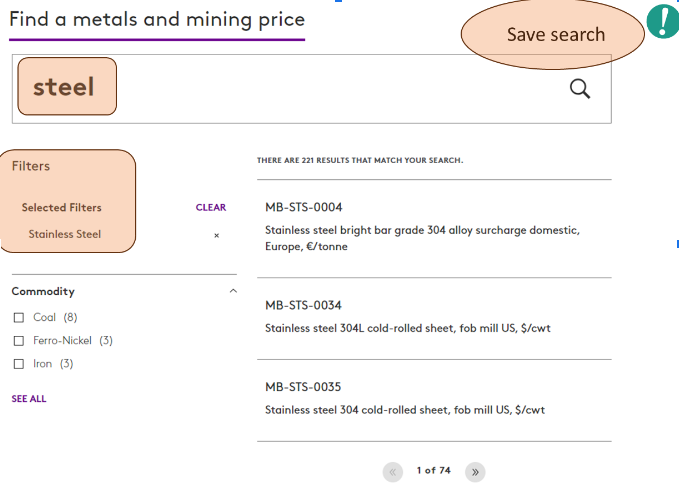1. What is a saved search feature?
When you are on a website, application, or app that allows you to search for products, information or anything else, then there is an option provided for the user to save the search criteria.
This criteria could be a combination of keywords and filters which the user can save for future. In order to save the search and its parameters, the user has to be a logged-in member of the site. When the user logs in to the site, they can access the search results by clicking on the saved search option.
2. Why is saved search important?
The saved search feature allows the user to easily access the pre-defined search criteria to view the results. This saves time and adds efficiency in the work of the user. They don’t have to remember the search criteria when they want to view certain results again.
3. Where is saved search implemented?
This saved search feature is most relevant in applications where the user has the need to run the same search criteria very frequently. Some use cases to have this feature are:
- Job site (B2C): A job seeker candidate is searching for a specific job (e.g. product manager in London with a salary of £50,000 and above). Chances are that they will come to this site for quite a few days to find any new job posting for them to apply to new jobs on a daily basis. Hence, they can save this search and run it by a click of a button
- Information publisher site (B2B): Suppose I am a research analyst that has to write reports on metal price trends. IN order to do that, I have a subscription to a metal price publishing product. In order to track the price, news and other details on a defined market & metals. Hence, I will save that search and every time i just need to click a link to view the results for my desired search criteria
4. Key things to consider while implementing saved search feature
The saved search option is saved against a user profile, so that needs to be stored in the application’s database. Key points to consider if you are building the saved search feature or enhancing it:
- Save the criteria, date of saving this criteria and the user-friendly name given to this specific saved search
- Have a section on your application to View the list of saved searches and also an option to Edit a saved search
- Allow the user to delete a saved search. However, get a confirmation before doing so
- If your digital product has facets (filters) on your search page, then please be careful before changing any facets (filters) as that may impact the saved searches that run on these filters
- There is an extra benefit of having a saved search, where you can offer the user to create an email alert based on this saved search. This would allow you to send an email alert to the user with search results based on the saved search criteria.
5. Live product examples of saved search feature
B2C job site
The saved search has been implemented by offering the user to set up a Job alert. Hence, the parameters of <product manager in London (10 miles radius) can be saved as a job alert.

Example# 1: B2C job site
B2B metal price publishing site
The save search has been implemented on the search results page. The user has searched for <steel> prices with a filter of <Stainless Steel>. The user can click on the ‘Save search’ feature and save these parameters to set a personal saved search toa access in future.

Example# 2: B2B metal price publishing site














 Home
Home

